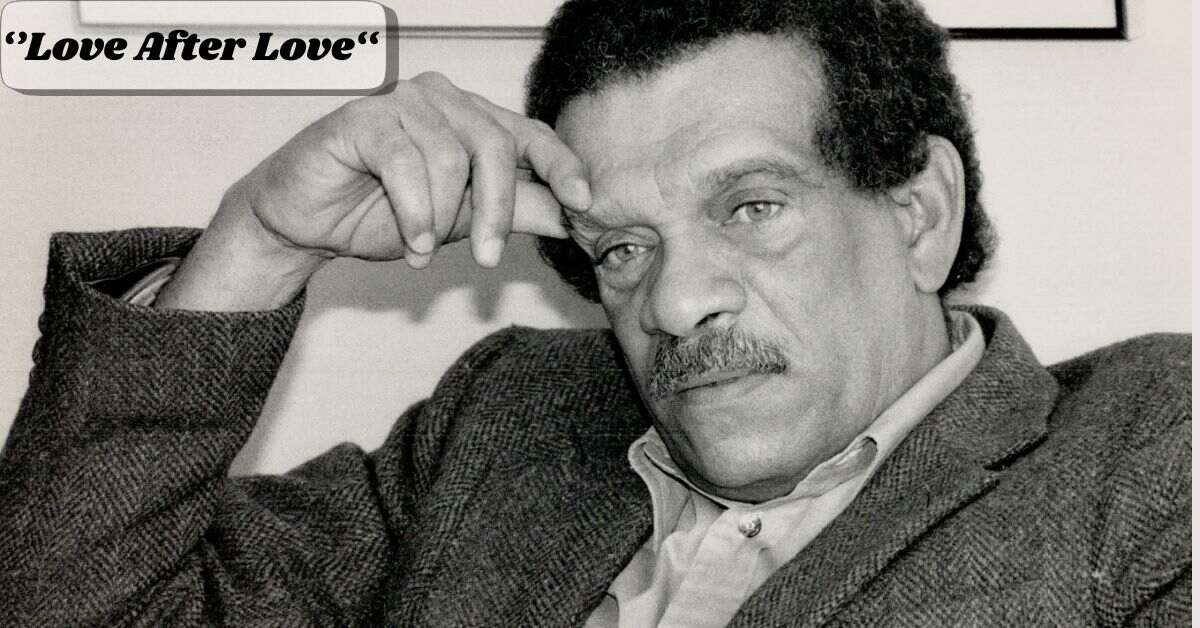What if the greatest love story you’ll ever experience is the one with yourself? Derek Walcott’s “Love After Love” has become one of the most quoted poems in therapeutic settings worldwide.
This Nobel Prize-winning poet crafted a masterpiece that transforms how we view self-acceptance and personal healing.
The Genesis Behind Derek Walcott’s “Love After Love”
Derek Walcott wrote “Love After Love” during a pivotal moment in his career and personal life. The poem emerged from his own struggles with identity as a Caribbean writer navigating between his African heritage and colonial education.
Published in 1976 in his collection “Sea Grapes,” the work reflected the broader cultural awakening happening across the Caribbean during the post-independence era.
The poem’s creation coincided with Walcott’s own journey of self-discovery after experiencing personal relationships that left him feeling disconnected from his authentic self.
He later described the writing process as “a conversation with the mirror” – a phrase that perfectly captures the poem’s central metaphor.
The 1976 publication date places this work within the context of the Black Arts Movement and the rise of post-colonial literature, making it both personal and politically significant.
Love After Love Derek Walcott Summary

The poem opens with the powerful line “The time will come when, with elation, you will greet yourself arriving at your own door.”
This stanza-by-stanza analysis reveals a carefully constructed journey from self-alienation to self-acceptance.
Walcott uses the metaphor of greeting a stranger who turns out to be yourself – a profound psychological concept that therapists now recognize as self-integration.
The second stanza continues this reunion narrative: “You will love again the stranger who was your self.” Here, Walcott acknowledges that we often become strangers to ourselves through trauma, toxic relationships, or societal pressures.
The poem’s genius lies in its prescription for healing – treating yourself with the same kindness you’d show a beloved friend returning home after a long absence.
The final stanza’s imagery of taking down letters and photographs represents releasing past versions of ourselves that no longer serve us.
Other Post: Brother To The Night Love Jones Poem Analysis
Exploring the Love After Love Derek Walcott Theme
The primary themes of “Love After Love” center on self-reconciliation and the radical act of choosing yourself. Walcott presents self-love not as narcissism, but as a necessary healing process.
The poem addresses the universal experience of losing touch with our authentic selves and provides a roadmap back to wholeness. The theme of spiritual resurrection runs throughout the work.
Walcott draws on biblical imagery of feasting and celebration to suggest that reconnecting with ourselves deserves the same joy we’d feel at a long-awaited reunion.
This religious undertone reflects his Caribbean background, where spiritual practices often emphasize personal transformation and community healing.
The poem’s universal resonance explains why it’s been translated into dozens of languages and used in contexts ranging from divorce recovery to addiction treatment programs.
Love After Love Derek Walcott Literary Devices
Walcott employs sophisticated literary devices to create the poem’s emotional impact.
The mirror metaphor serves as the central organizing principle, representing both self-reflection and the moment of recognition when we see ourselves clearly.
The use of imperative mood throughout the poem creates a sense of gentle command – “Give back your heart to itself” – as if the speaker is a wise guide leading us home.
The poem’s free verse structure mirrors the organic process of self-discovery. Unlike rigid formal poetry, the flowing lines suggest that healing happens naturally when we allow it.
Repetition patterns in phrases like “love again” and “your self” create a hypnotic quality that many readers find meditative.
The second-person perspective (“you will“) makes every reader the subject of the poem, creating immediate intimacy and personal relevance.
| Literary Device | Example from Poem | Effect |
| Metaphor | “stranger who was your self” | Creates psychological distance and reunion |
| Imperative Voice | “Give back your heart” | Provides direct guidance |
| Religious Imagery | “feast on your life” | Elevates self-care to sacred act |
| Second Person | “you will greet yourself” | Creates personal connection |
One More Poem: Brother To The Night Love Jones Poem Lyrics
Love After Love Derek Walcott Publication Date Significance
The 1976 literary landscape was marked by increasing attention to post-colonial voices and psychological healing.
Walcott’s publication of “Love After Love” coincided with the emergence of self-help literature and the growing acceptance of therapy in mainstream culture.
The poem bridged the gap between high literary art and accessible wisdom, making it revolutionary for its time.
The work’s evolution over decades demonstrates how great poetry transcends its original context. What began as one poem in a collection has become a standalone piece of transformative literature.
Digital platforms have introduced it to new generations who might never encounter traditional poetry, proving that authentic wisdom finds its audience regardless of medium.
Practical Lessons from “Love After Love”
The poem offers concrete steps for self-reconciliation. First, it suggests we must recognize our self-alienation patterns – the ways we’ve become strangers to ourselves.
Second, it prescribes creating space for self-reflection, literally and figuratively arriving at our own door. Finally, it advocates for celebrating personal growth with the same joy we’d feel at welcoming home a beloved friend.

Admin of romanticflart.com, I share deep romantic lyrics and heart-touching lines. I love writing feelings in words. Let’s feel love together, every day.
